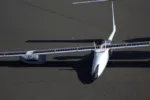Latvia has signed a €50 million contract with the German Ministry of Defence (Bundeswehr) for the procurement of Skorpion 2 automated mine-laying systems. The acquisition marks a significant step in strengthening Latvia’s territorial defense posture and NATO interoperability amid heightened regional tensions.
Strategic Context: Baltic Defense Posture Intensifies
The deal comes amid growing concerns over regional security in the Baltic states following Russia’s full-scale invasion of Ukraine and continued militarization along NATO’s eastern flank. Latvia, which shares a 214-kilometer border with Russia and a 173-kilometer border with Belarus, has been accelerating its defense modernization programs under the National Armed Forces Development Plan.
Mine warfare—particularly defensive minefields—is increasingly viewed as a cost-effective force multiplier for small nations facing potential mechanized incursions. The Skorpion 2 system will enable Latvia to rapidly deploy anti-tank minefields across key terrain chokepoints to delay or channel enemy movements during a crisis or conflict.
What Is the Skorpion 2 System?
The Skorpion 2 is an advanced automated mine-laying system developed by Dynamit Nobel Defence (DND), a German defense contractor known for its shoulder-launched munitions and combat engineering equipment. The system is mounted on an armored or protected vehicle chassis—typically MAN HX-series trucks or other military-grade platforms—and is capable of laying pre-programmed minefields using scatterable anti-tank mines.
Key features of the Skorpion 2 include:
- Automated Deployment: Computer-controlled release mechanisms allow precise placement of mines based on GPS coordinates and mission planning software.
- High Throughput: Capable of laying hundreds of mines per hour across multiple lanes or patterns.
- Modular Payloads: Compatible with various types of anti-tank mines, including DM31 and AT-2 series (depending on export restrictions).
- C4ISR Integration: Interfaces with command-and-control networks to support synchronized obstacle planning within broader maneuver schemes.
The system is designed to comply with international treaties such as Amended Protocol II of the Convention on Certain Conventional Weapons (CCW), which mandates self-deactivation or detectability features for remotely delivered mines.
Latvian Procurement Details and Timeline
The Latvian Ministry of Defence confirmed that the €50 million contract includes not only delivery of complete systems but also training packages, spare parts, technical documentation, and integration support. Deliveries are expected to begin in late 2026 and continue through 2028. While exact quantities have not been disclosed publicly due to operational security concerns, open-source estimates suggest Latvia may be acquiring between four and eight complete systems.
This procurement was facilitated through bilateral government-to-government arrangements rather than via NATO’s NSPA or EU PESCO frameworks. It reflects Latvia’s strategy to directly source proven capabilities from trusted allies while ensuring rapid fielding timelines.
DND’s Growing Role in European Combat Engineering Solutions
Dynamit Nobel Defence has steadily expanded its portfolio beyond infantry-carried munitions into complex vehicle-mounted systems. The Skorpion series was originally developed for the Bundeswehr under its “Pionierfähigkeiten” modernization program aimed at enhancing mobility/countermobility capabilities within German combat brigades.
The Bundeswehr began fielding early versions of the Skorpion system around 2013–2015; since then, DND has refined it into the current Skorpion 2 variant featuring improved automation, digital control interfaces, and enhanced safety protocols. Germany continues to operate these systems as part of its engineer battalions assigned to NATO Very High Readiness Joint Task Force (VJTF) rotations.
NATO Interoperability and Tactical Implications
The addition of Skorpion 2 systems will significantly enhance Latvia’s ability to conduct coordinated obstacle emplacement operations within NATO battle plans. In particular:
- Tactical Obstacle Integration: Allows Latvian forces to contribute complex obstacle belts during multinational exercises such as DEFENDER-Europe or Saber Strike.
- Crisis Response Speed: Enables rapid mining operations during early phases of hybrid aggression scenarios where time-sensitive area denial may be critical.
- Sustainment Planning: Supports doctrinal shifts toward layered defense-in-depth concepts being adopted across Baltic land forces.
Baltic Regional Synergies Emerging
This acquisition also aligns with broader regional trends. Estonia recently announced investment into remote-controlled minelayers co-developed by Milrem Robotics (Estonia) and ST Engineering (Singapore), while Lithuania is exploring partnerships for mobile barrier deployment systems using drones and UGVs. Together, these efforts indicate a shift toward digitized counter-mobility solutions tailored for dispersed territorial defense strategies across northern Europe.
Civil-Military Considerations
The deployment of scatterable mines—even compliant ones—raises questions about post-conflict clearance responsibilities and civilian safety. Latvian officials have emphasized adherence to CCW provisions and plan to invest in dedicated EOD teams trained specifically on deactivation protocols tied to these new systems. Additionally, all deployed mines will be digitally logged via GIS-based tracking tools integrated into national C4ISR networks—a practice already adopted by Germany’s Bundeswehr engineers operating similar platforms.
A Measured but Strategic Investment
Though modest compared to larger armored vehicle programs or air defense acquisitions, this €50 million investment represents a calculated move by Riga toward scalable deterrence through asymmetric means. As one Latvian officer noted during recent field trials near Ādaži Training Area: “We cannot match tanks-for-tanks—but we can shape terrain faster than they can advance.”
Conclusion: Terrain Shaping as Deterrence Doctrine
The procurement of Germany’s Skorpion 2 automated mine-laying system underscores Latvia’s commitment to modernizing its defensive engineering capabilities amid evolving threats along NATO’s eastern frontier. By investing in high-throughput terrain denial tools integrated into digital command structures, Riga positions itself not only as a capable contributor within allied contingency plans but also as an innovator in affordable deterrence architecture suited for small states facing large adversaries.










